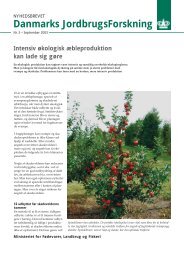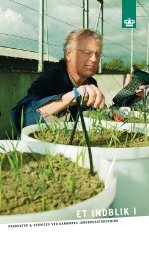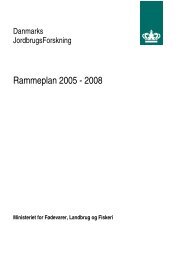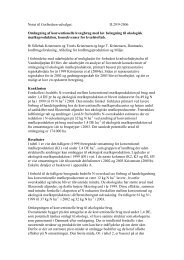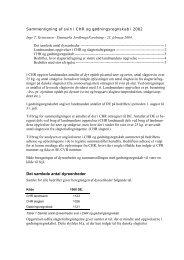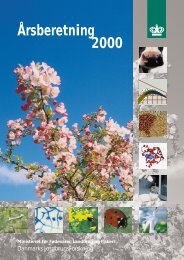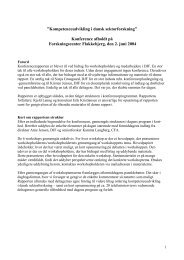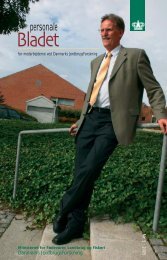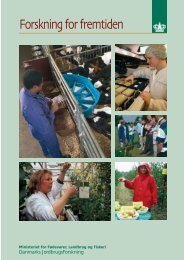Reproduction performances and conditions of group-housed non ...
Reproduction performances and conditions of group-housed non ...
Reproduction performances and conditions of group-housed non ...
Create successful ePaper yourself
Turn your PDF publications into a flip-book with our unique Google optimized e-Paper software.
- Paper IV -<br />
4. Discussion<br />
The average litter size was high compared to earlier studies, whereas the percentage <strong>of</strong><br />
sows re-mated corresponded to several previous on-farm studies (Gjein & Larssen, 1995;<br />
Olsson & Svendsen, 1997; Hansen & Kongsted, 2002). The high litter sizes <strong>of</strong> the sows<br />
involved in this study, support that <strong>group</strong> housing <strong>of</strong> <strong>non</strong>-lactating sows does not necessarily<br />
lead to poor reproduction performance.<br />
The chance <strong>of</strong> pregnancy (P=0.02) <strong>and</strong> number <strong>of</strong> born piglets per litter (P=0.08) decreased<br />
with decreased back fat gain from weaning to three weeks after mating. Furthermore, sows<br />
eating less than 20% <strong>of</strong> the observations at feeding were in markedly higher risk <strong>of</strong> returning<br />
to oestrus compared to sows eating more frequently (P




